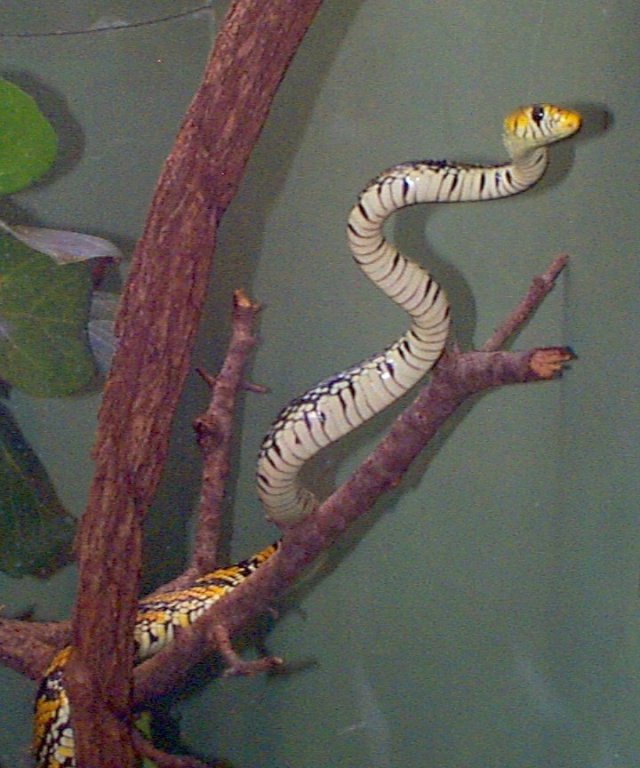General information:
The Mexican Tiger Rat Snake is
one of the longest snakes of the Americas. Since the snake lives
in areas with tall trees and vegetation, their special color patterns of
yellow and black help them blend in perfectly with the speckled sunlight
shining down through the trees.
This particular species of snake
is usually very docile when left alone, but when provoked they will shake
their tails (despite not having a rattle) and hiss very loudly. They
can also inflate their necks dramatically. If this does not warn
off the intruder, then the Mexican Tiger Rat Snake will strike repeatedly.
| There are also many subspecies
of this snake, with varying amounts of black and yellow in their pattern.
Mexican tiger rat snakes are oviparous and the hatched young resemble their
parents. The colors of young snakes may become either a little
darker or paler as they age, depending on subspecies or population, but
there is no dramatic change in pattern. Some juvenile Tiger
Rat Snakes have deeper golden or orange banding around the midsection;
only the Mexican subspecies retains the deeper color as the adult. |
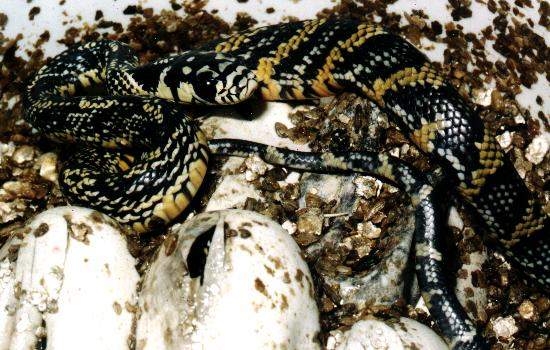
Central American Spilotes hatchlings courtesy of
Dr. Philippe Blais
|

Yearling Spilotes courtesy of
Bill Gillingham
|
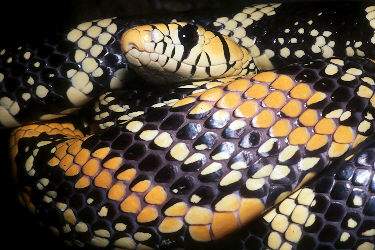
Gold-banded Mexican Spilotes courtesy of
R. D. Bartlett
|
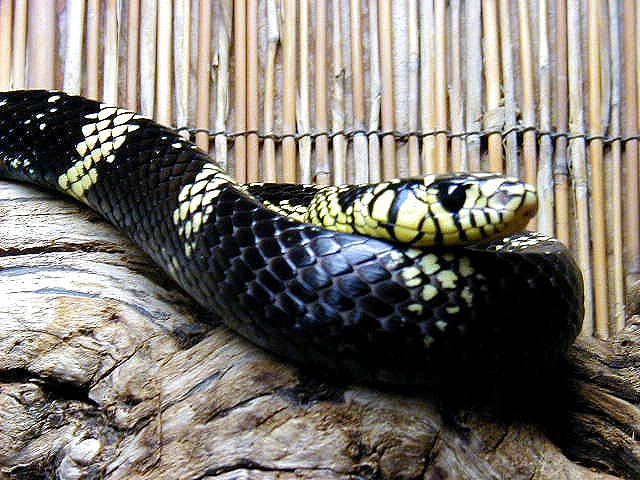
Adult Spilotes courtesy of
Bill Gillingham
|
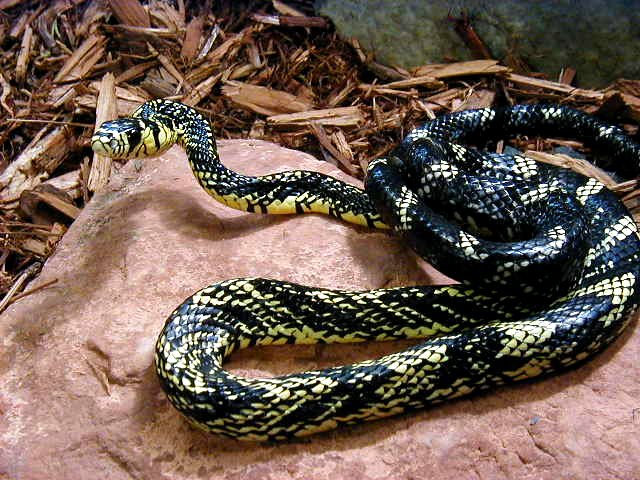
Yearling Spilotes courtesy of
Bill Gillingham
|
The growth of snakes is indeterminate
-- they continue to grow throughout their lifetimes.
![]()
![]()
